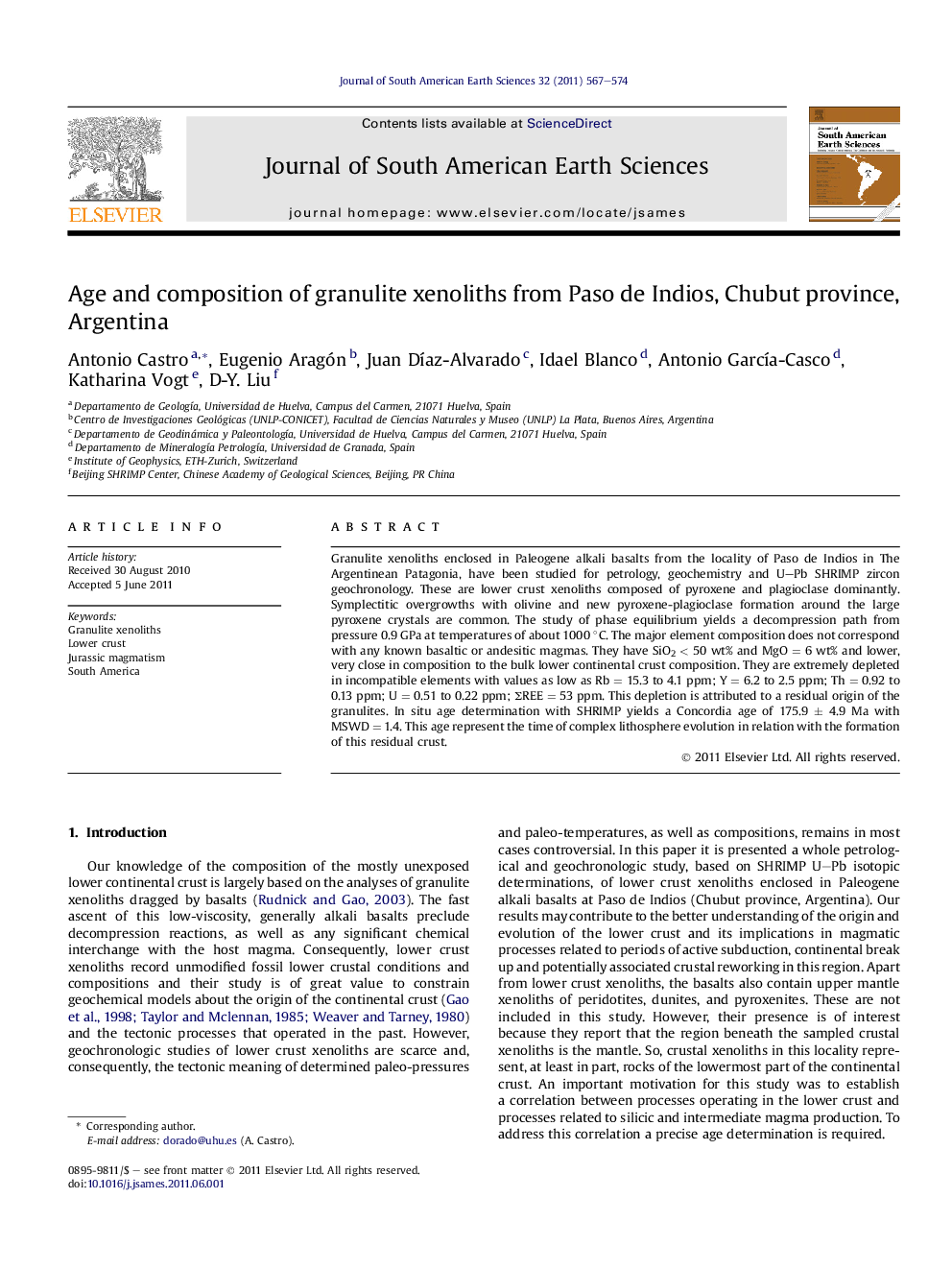| Article ID | Journal | Published Year | Pages | File Type |
|---|---|---|---|---|
| 4682610 | Journal of South American Earth Sciences | 2011 | 8 Pages |
Granulite xenoliths enclosed in Paleogene alkali basalts from the locality of Paso de Indios in The Argentinean Patagonia, have been studied for petrology, geochemistry and U–Pb SHRIMP zircon geochronology. These are lower crust xenoliths composed of pyroxene and plagioclase dominantly. Symplectitic overgrowths with olivine and new pyroxene-plagioclase formation around the large pyroxene crystals are common. The study of phase equilibrium yields a decompression path from pressure 0.9 GPa at temperatures of about 1000 °C. The major element composition does not correspond with any known basaltic or andesitic magmas. They have SiO2 < 50 wt% and MgO = 6 wt% and lower, very close in composition to the bulk lower continental crust composition. They are extremely depleted in incompatible elements with values as low as Rb = 15.3 to 4.1 ppm; Y = 6.2 to 2.5 ppm; Th = 0.92 to 0.13 ppm; U = 0.51 to 0.22 ppm; ΣREE = 53 ppm. This depletion is attributed to a residual origin of the granulites. In situ age determination with SHRIMP yields a Concordia age of 175.9 ± 4.9 Ma with MSWD = 1.4. This age represent the time of complex lithosphere evolution in relation with the formation of this residual crust.
► Patagonia middle Jurassic granulite xenoliths show crustal growth processes. ► Granulite development may be related to Aluk plate subduction and Gondwana break up. ► The granulites are extremely depleted in incompatible elements. ► The depletion is attributed to a residual origin of the granulites.
